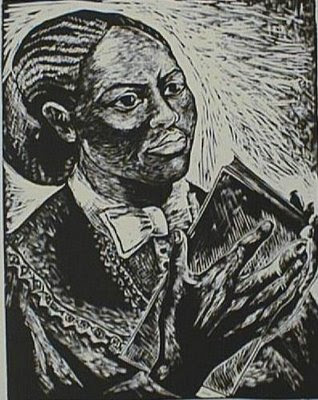 Anyone who has visited Mexico City for any period of time is struck by the amazing number of quality museums available. Though "chilangos" (slang term used to refer to people from Mexico City, which is called D.F. for short) look down their noses at the "provincias", meaning anywhere outside of the Mexican capital, other large cities often have wonderful museums to visit. And unlike here in the U.S. it won't cost you much, in fact many are free! I highly recommend you check them out.
Anyone who has visited Mexico City for any period of time is struck by the amazing number of quality museums available. Though "chilangos" (slang term used to refer to people from Mexico City, which is called D.F. for short) look down their noses at the "provincias", meaning anywhere outside of the Mexican capital, other large cities often have wonderful museums to visit. And unlike here in the U.S. it won't cost you much, in fact many are free! I highly recommend you check them out.In addition to the permanent regional museums that have collections about Michoacán history (unfortunately minus English translations), every time I am in Morelia, I try to visit two cultural attractions that often have wonderful temporary exhibits. The first is the Palacio Clavijero, an important historical building which has recently been renovated. In the summer of 2008 we saw a fantastic exhibit that included numerous pieces from the extensive 60,000 piece Pre-Columbian art collection of Diego Rivera, that inspired him and often appears in some of his paintings and murals. I learned from that exhibit that there was a very strong connection between Michoacan's traditional folk art and Rivera's paintings. Of course his wife, Frida Kahlo also collected pieces from Michoacan for her kitchen. In April this year I saw an interesting exhibit at the Palacio Clavijero about the Indians of the Amazon, plus a large exhibit by Mexico City surrealist painter, Arturo Rivera. The Palacio was a former Jesuit college built in 1660 and is located on Nigromante near Ocampo, between the Jardin de las Rosas (one of my favorite spots in Morelia) and the biblioteca, the old library, which you should also check out.
 My other favorite museum is the modern art museum, Museum de Arte Contemporaneo Alfredo Zalce (MACAZ). Zalce was a well-loved artist from Michoacan and you can see his extraordinary murals at the Palacio de Gobierno. I saw two beautiful exhibits this past April at this small museum located in the bosque across from the aqueduct and Plaza Morelos, or "el caballito" as the locals call the large statue of Morelos on horseback. On the first floor there was a show featuring a collection all by women artists, held over from Women's History month. There I discovered Fanny Rabel, a student of Frida Kahlo's who also worked with Diego Rivera and David Siquieros, another of Mexico's most recognized muralists. She was part of the group of artists known as "Los Fridos". Rabel, originally Rabinovich, was a Polish Jew who immigrated too Mexico in 1938. She died in 2008. I found a couple of images like this lithograph and the painting above on the internet, but really there is very little information on her.
My other favorite museum is the modern art museum, Museum de Arte Contemporaneo Alfredo Zalce (MACAZ). Zalce was a well-loved artist from Michoacan and you can see his extraordinary murals at the Palacio de Gobierno. I saw two beautiful exhibits this past April at this small museum located in the bosque across from the aqueduct and Plaza Morelos, or "el caballito" as the locals call the large statue of Morelos on horseback. On the first floor there was a show featuring a collection all by women artists, held over from Women's History month. There I discovered Fanny Rabel, a student of Frida Kahlo's who also worked with Diego Rivera and David Siquieros, another of Mexico's most recognized muralists. She was part of the group of artists known as "Los Fridos". Rabel, originally Rabinovich, was a Polish Jew who immigrated too Mexico in 1938. She died in 2008. I found a couple of images like this lithograph and the painting above on the internet, but really there is very little information on her.On the second floor of the museum was a color photography exhibit called "Cuatro Rumbos", which refers to the four indigenous groups in the state of Michoacán. The collection won an award from UNESCO, will be going to France's Mornay Arts Center, and later will be published as a book. There are a large number of photos of Otomi and Masawa people living in the eastern part of the state, and who are less familiar to me. Some of the Masawa women (photos below) who live in the sierra-- where the Monarch butterfly sanctuary is -- weave beautiful pine needle baskets sold by Mexico By Hand. www.mexicobyhand.com

The Museo de Arte Contemporaneo Alfredo Zalce is open Tues.- Fri. 10-8, Sat/Sun 10-6.
Admission is free.
You can see a slide show of Ivan Holguin Sarabia's photos on the link below.
http://www.agenciainfomania.com/galerias/Cuatro%20rumbos,%20Atlas%20Etnografico%20de%20Michoacan%20de%20Ivan%20Holguin%20Sarabia/slides/IMG_8193.html

